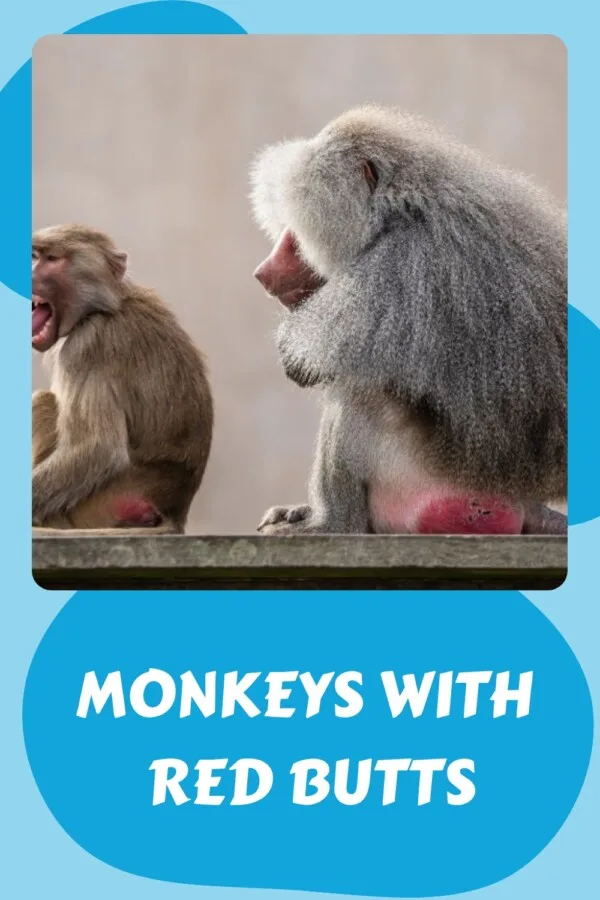Monkeys with red bottoms, also known as “red butt monkeys,” are a fascinating group of primates found in various regions across Africa and Asia. These distinctive animals are characterized by their hairless bottoms, which range in color from red to dark red or pink-red. This unique physical trait makes them a subject of curiosity among humans and plays an essential role in their social behavior and communication within their groups.
Several species within the primate world exhibit this remarkable feature, including baboons, rhesus macaques, mandrills, Japanese macaques, and Celebes crested macaques.
Their colorful bottoms serve as non-verbal cues for communicating with other members of their species, particularly during mating seasons.
Female red butt monkeys display their swollen red butt bottoms as an indication of fertility, which attracts the attention of male counterparts for potential mating opportunities.
As diverse and captivating creatures, monkeys with red butts garner significant interest from researchers and animal enthusiasts.
These primates often inhabit various habitats, ranging from forests to savannahs, exhibiting unique behaviors and adaptations that make them a compelling subject for further study.
Different Types of Monkeys with Red Butts
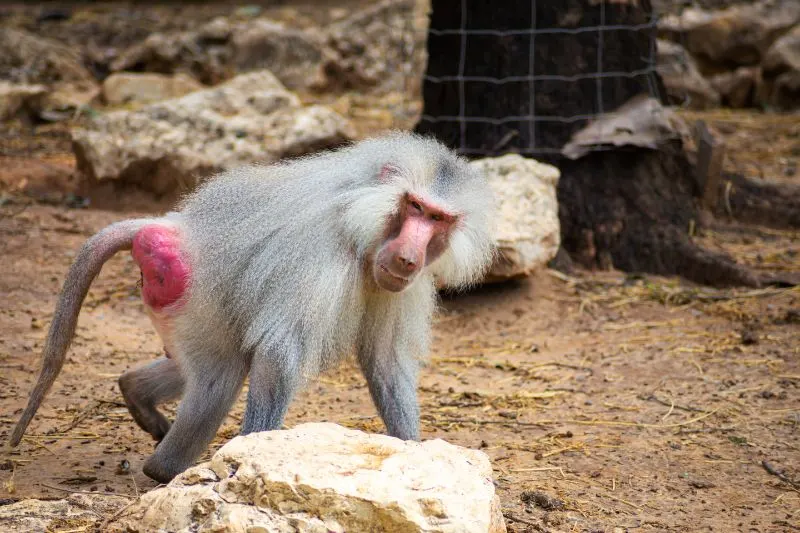
The evolution and classification of monkeys with red butts involve various Old World monkey species, including macaques, baboons, and unique species such as the mandrill and lesula.
Macaques
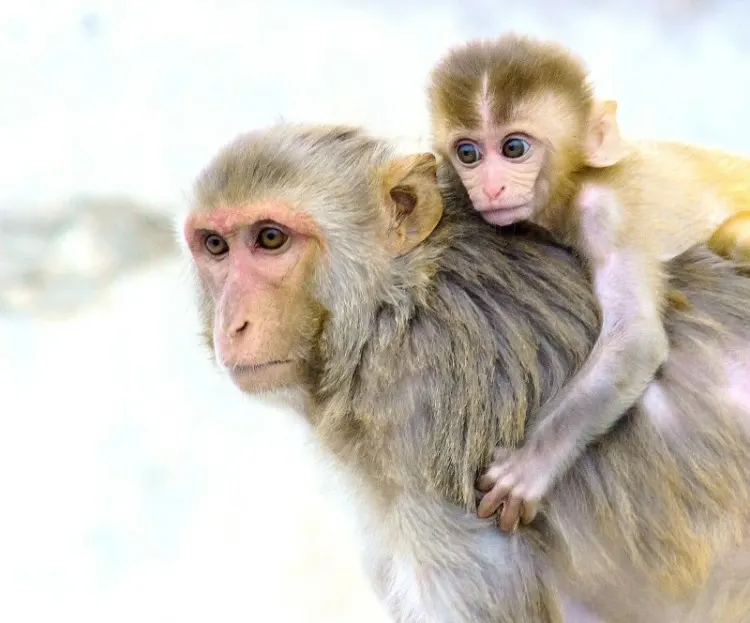
Macaques are a diverse group of primates belonging to the genus Macaca. They can be found in various habitats, from the tropics to the mountains. Some notable macaques with red bottoms include the Japanese macaque (the snow monkey), rhesus macaque, and Celebes crested macaque. They exhibit red faces and bottoms, with females typically having redder butts than males. This characteristic is thought to be associated with sexual attraction.
Baboons
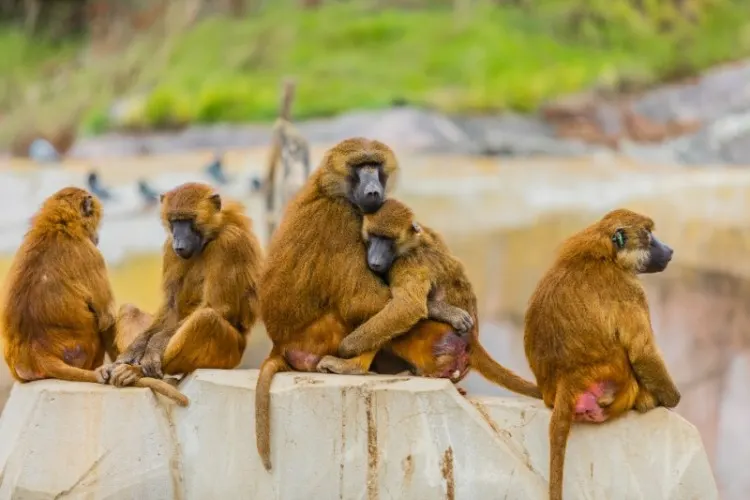
Baboons are another group of monkeys with red buttocks. These primates belong to the genus Papio, which includes species like Papio hamadryas (hamadryas baboon) and Papio papio (Guinea baboon). They are characterized by their robust builds and distinct reddish-pink patches on their buttocks.
Similar to macaques, these patches are believed to play a role in attracting mates during sexual behavior. Baboons, however, exhibit significant sexual dimorphism, with males being larger than females.
The mandrill and lesula are two other unique monkey species that exhibit red buttocks. The mandrill (Mandrillus sphinx) is known for its striking red and blue facial coloring and red-bottomed appearance. The lesula, a relatively new species discovered in Africa, also features a distinctive red bottom.
It is essential to distinguish these red-bottomed monkeys from other primates, such as chimpanzees, which are part of the Great Apes family and do not exhibit red-bottomed features.
Physical Characteristics
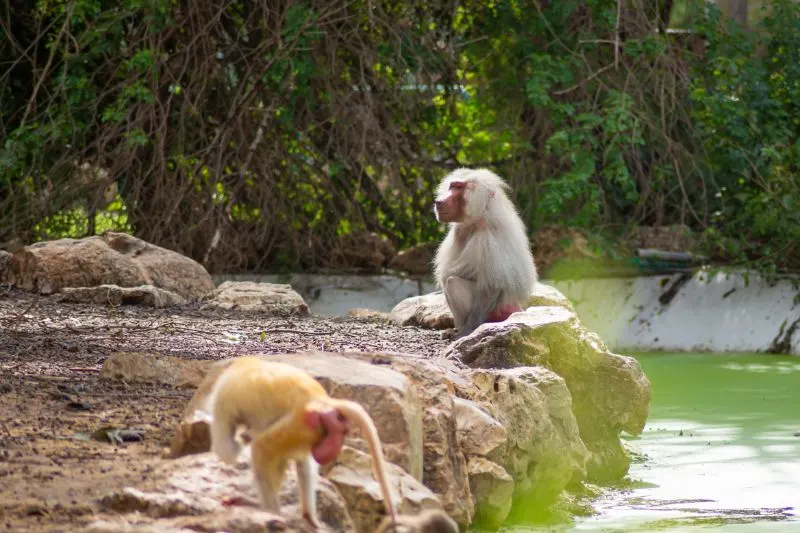
Monkeys with red butts are known for their distinctive red patches on their buttocks, which serve as a primary means of communication for mating purposes. Hamadryas baboons are a prime example of this group, with males weighing between 20-30 kg (44-66 lbs) and females weighing 10-15 kg (22-33 lbs).
During their heat season, these primates’ red bottoms are more prominent in females. The female baboon’s buttocks can swell to about 4-6.5 inches (10-16.5 centimeters), and after ovulation, it returns to its standard size. This swelling signifies when a female baboon’s butt is most fertile and is used to communicate with male counterparts that they are ready to mate.
In addition to their bright red butts, they also have other physical attributes that make them unique. For instance, their tails are a distinctive feature that helps with balance, while their hairless bottoms are covered in callouses, providing extra protection when they sit on rough surfaces.
Different species of baboons, such as olive, hamadryas, guinea, yellow, and chacma baboons, may have red bottoms during their mating period. This physical characteristic can last for approximately 10 to 20 days every month to indicate ovulation.
On the other hand, males possess a robust chest – alluding to their strength and dominance in ranking males in the group.
Table Summary of Monkeys
| Species | Common Name | Population | Habitat |
|---|---|---|---|
| Papio hamadryas | Hamadryas baboon | 482,000 | Africa, Arabian Peninsula |
| Mandrillus sphinx | Mandrill | 3,000 | Central Africa |
| Erythrocebus patas | Patas monkey | Unknown | Sub-Saharan Africa |
| Cercopithecus erythrotis | Red-eared guenon | Decreasing | West Central Africa |
See Related: Important Pros and Cons of Tar Sands Oil
Geographical Distribution and Habitats
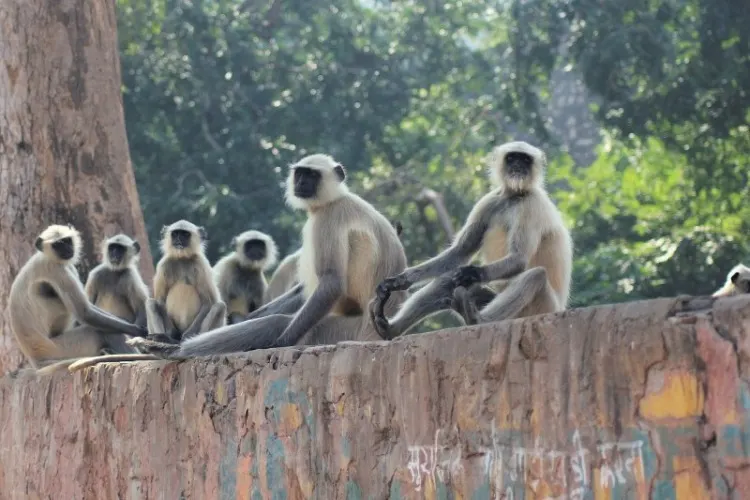
Monkeys with red butts, such as Mandrills and some Baboon species, can be found in various regions worldwide. Their habitats primarily include tropical rainforests and dense forests.
In Africa, the Mandrill (Mandrillus sphinx) is native to west central Africa, occupying territories in countries like Cameroon, Gabon, and the Democratic Republic of the Congo. These large, colorful primates thrive in tropical rainforests and reside in large social groups.
Baboons, on the other hand, have a broader distribution across Africa. For instance, female Olive Baboons (Papio anubis) develop red bottoms during their mating season. They inhabit savannas, grasslands, and woodlands throughout the continent’s central, eastern, and southern regions.
The Western Red Colobus (Piliocolobus badius) is an example of a species found in coastal West Africa, living predominantly within tropical rainforests. They share habitats with other primates like the Bay Red Colobus and Upper Guinea Red Colobus.
Shifting the focus to Asia, the Japanese Macaque (Macaca fuscata) is a monkey species native to Japan, particularly the island of Honshu. While they do not possess red buttocks, their faces take on a reddish hue during winter. These primates dwell in various environments such as subtropical forests, temperate broadleaf forests, and even subalpine regions.
Lastly, in Southeast Asia and Indonesia, the Celebes Crested Macaque (Macaca nigra) can be found inhabiting the northeastern part of the Sulawesi island in Indonesia. Their habitat consists of tropical rainforests and mangroves. While known for their distinctive crests, Celebes Crested Macaques also exhibit reddish butts similar to their African counterparts.
By examining these monkeys’ geographical distribution and variety of habitats, we gain insights into their fascinating adaptations to various climates and ecosystems across Africa, Asia, and Southeast Asia.
Behavior and Social Structure
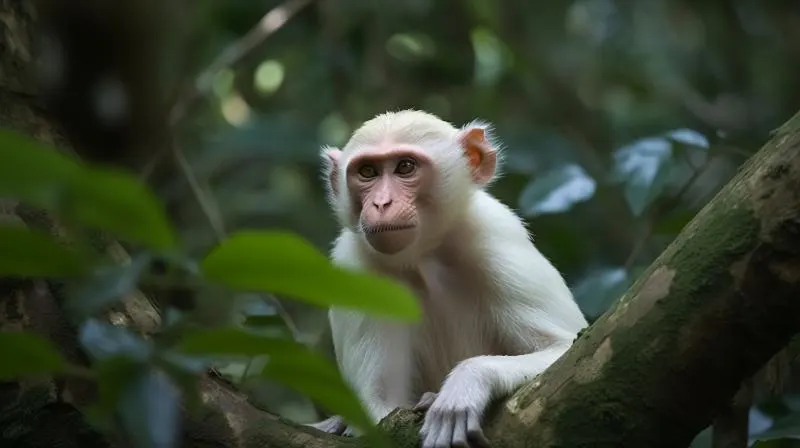
Several species of monkeys with red butts exhibit unique social structures and behaviors. One such species is the Hamadryas baboon. These monkeys live in one-male units (OMUs), comprising a dominant male, multiple females, and their offspring. The dominant male asserts his position through strength, power, and displays of aggression. Several OMUs come together to form larger groups called bands, which can contain hundreds of individuals.
In maintaining their social status, the dominant males of these red-bottomed monkeys use complex communication and relationships. Some of these methods include grooming, vocalizations, and body language. Within the social hierarchy, attacks can occur when a dominant male feels challenged or needs to assert their position. As a result, resilience and strategic alliances are crucial in preserving a monkey’s position within the group.
In contrast, mandrills are primarily terrestrial monkeys with colorful red and blue skin on their face and posterior. These monkeys display sexual dimorphism, characterized by males having larger bodies, longer canine teeth, and brighter coloring. They forage on the ground for fruits, roots, and animals, including insects, reptiles, and amphibians. Although they don’t have a hierarchical social structure like the Hamadryas baboons, mandrills exhibit behaviors indicative of dominance and power in their social interactions.
Japanese macaques, known as snow monkeys, possess red faces and red butts. Once again, female macaques tend to have redder butts than males, which signals sexual attractiveness. The red color in these monkeys also plays a crucial role in their social structure and interactions, with the more dominant individuals often exhibiting more vibrant and pronounced coloring.
Reproductive Process and Mating
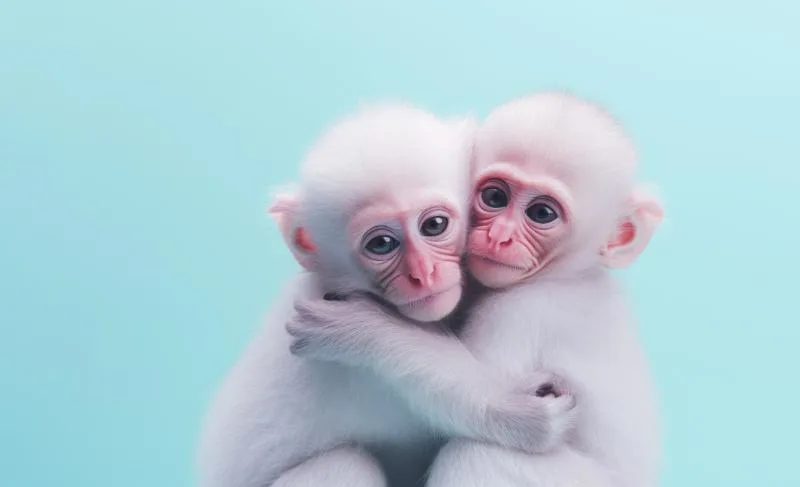
During the reproductive process of primates and female baboons, several factors indicate the readiness of both male and female monkeys for mating. In male baboons, an increase in testosterone levels causes them to become more aggressive and assertive in finding a mate. On the other hand, female monkeys experience swelling and redness in their buttocks, signaling that they are in heat and ready for mating.
Fertility in female monkeys is closely linked to their ovulation cycle. When ovulating, they experience a noticeable swelling in their genital region, and the skin turns red.
Simultaneously, the male baboons recognize these visual cues and become more eager to engage in mating. The female monkeys’ red buttocks are essential for attracting male counterparts during mating season.
Mating season varies depending on the monkey species, given that primates have different reproductive habits. In general, during mating season, female monkeys reach sexual maturity, and their bodies become more receptive to mating and procreation with other monkeys.
When a female monkey is in heat, her physical appearance and behavior change to attract a suitable mate, often resulting in competitive behavior among female chimps and males. As the testosterone level rises in male baboons, they show more territorial aggression and increased efforts to guard and control access to females.
The reproductive process and mating in monkeys with red bottoms is similar to other primates. The primary difference lies in the visual cues indicating fertile females, which helps increase their chances of successful mating and reproduction.
Dietary Habits and Hunting
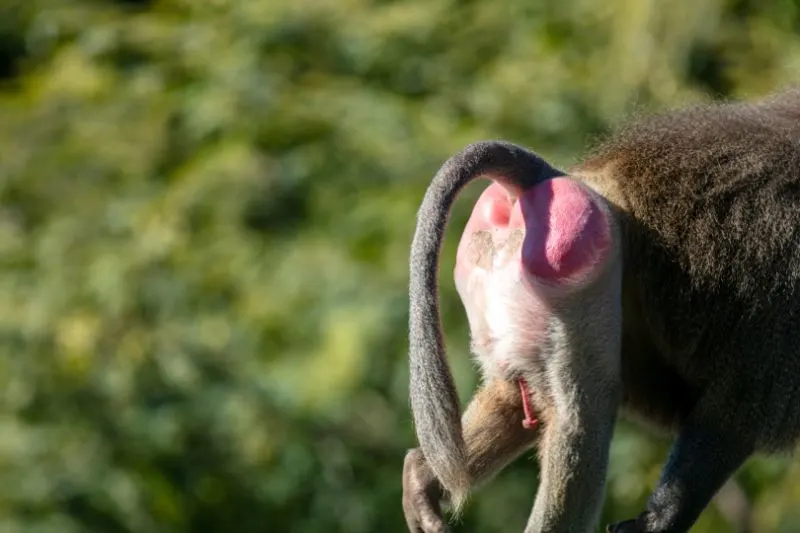
Monkeys with red bottoms, such as mandrills and Japanese macaques, have diverse dietary habits that vary depending on their species and habitat. These primates are predominantly omnivorous, consuming various food sources to meet their nutritional needs.
Fruits make up a significant portion of their diet, providing essential vitamins and minerals. Their consumption of fruits also aids in seed dispersal, benefiting the overall ecosystem.
In addition to fruits, monkeys with red bottoms feed on insects, a vital protein source promoting healthy growth and development. Some species may consume larger insects like beetles and caterpillars, while others may focus on smaller prey, such as ants and termites.
While fruits and insects are common food sources for these primates, their diet can also include grass, bark, and roots. Grasses and leaves offer additional nutrients, while bark and roots provide essential fibers, contributing to the overall functioning of the digestive system. This flexible and adaptable diet allows monkeys with red bottoms to thrive in a variety of ecosystems and to cope with seasonal fluctuations in food availability.
In terms of hunting, these primates are not known for their exceptional prowess; however, they may occasionally hunt small animals like rodents and birds to supplement their insect-based protein intake. They are agile and possess strong limbs and hands, allowing them to navigate their surroundings and capture prey as needed efficiently.
Finally, it is worth noting that some monkeys with red bottoms have been known to raid crops in agricultural areas, leading to conflict with farmers. These incidents often result from habitat loss and fragmentation as humans encroach on their natural territories, forcing the primates to seek alternative food sources.
See Related: Ultimate Guide to Maximize the Efficiency of a Solar Panel
Interaction with Humans and Other Species
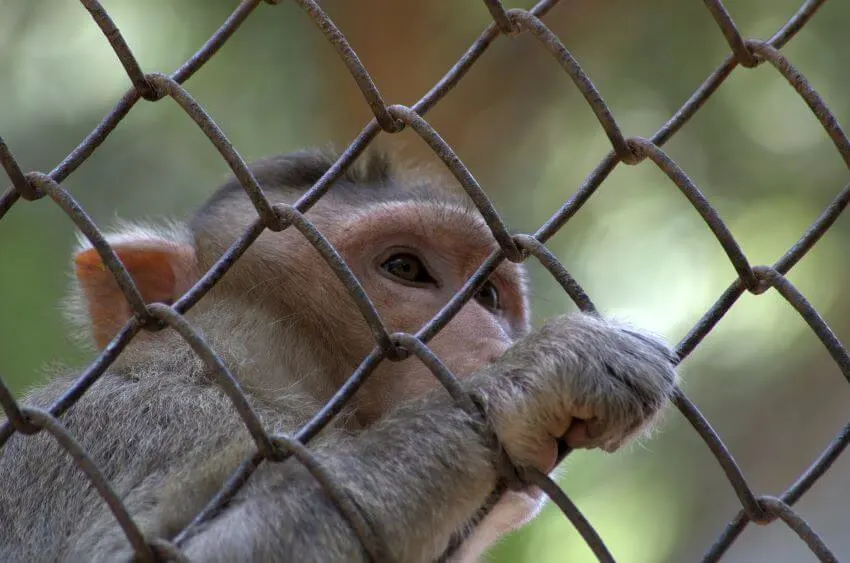
Monkeys with red bottoms, such as baboons and some species from the Cercopithecus family, present fascinating interactions with various species, including humans, apes, chimpanzees, and birds. These interactions often involve communication and relationships that serve different purposes for each species.
In areas where monkeys with red bottoms live, such as Africa and Asia, humans have taken an interest in their vibrant colors and unique behaviors. In some cases, these monkeys have been captured for pets or displayed in zoos. In other instances, local communities tolerate their presence and acknowledge their roles in the ecosystem.
These monkeys engage in complex social interactions with other primates, especially with apes and chimpanzees. Often living in the same habitats, they exhibit mutual curiosity and tend to observe each other from a distance. Communication among these primates consists of vocalizations, body language, and displays of their colorful bottoms, which convey critical social cues such as dominance, submission, and mating signals.
In turn, apes and chimpanzees may respond similarly, leading to interspecies communication. While these interactions can be largely peaceful and cooperative, conflicts can arise when resources such as food or territory are limited. Each species has evolved various strategies to maintain balance and ensure their ongoing survival.
Equally captivating are relationships between monkeys with red bottoms and birds. Certain bird species act as cleaning symbionts for these monkeys, removing parasites and debris from their fur. This mutual relationship benefits both species, as monkeys receive grooming while the birds gain access to a food source.
In conclusion, monkeys with red bottoms exhibit a variety of interactions with humans and other species. These interactions often entail communication, relationships, and cooperation among different animals, showcasing the complexity and diversity of nature’s social fabric.
Conservation Status and Threats
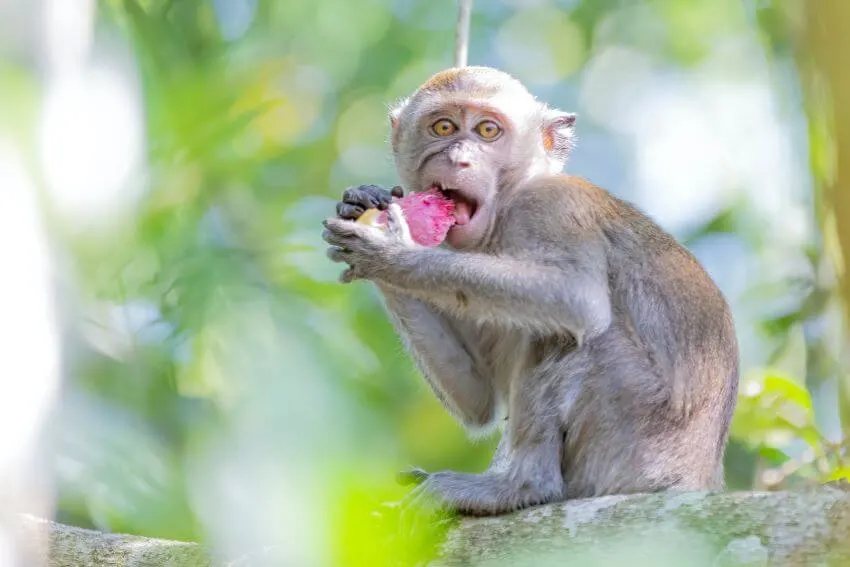
Several species of monkeys with reddish or pinkish buttock areas, such as Hamadryas baboons and red colobus monkeys, face various conservation threats. The conservation status and primary threats facing these monkeys mainly include habitat loss, poaching, and the bushmeat trade.
The red colobus monkeys consist of 17 species; alarmingly, over 75% are listed as Critically Endangered or Endangered. All of these species are considered threatened with extinction. Similarly, the Hamadryas baboon’s status is listed as “Least Concern,” but their populations are reported to be decreasing.
Habitat loss poses a significant threat to these primates. With increasing human encroachment into their natural habitats, the living spaces for these monkeys are shrinking, leading to a decline in their populations. Logging, agriculture expansion, and infrastructure development contribute to ongoing habitat loss.
Poaching and commercial bushmeat trade also play a critical role in decreasing the populations of monkeys with red buttocks. Illegal hunting for bushmeat is widespread, affecting the red colobus monkeys, Hamadryas baboons, and numerous other primate species. In some regions, these primates are targeted for their perceived medicinal value or captured for the pet trade, posing further threats to survival.
Interesting Facts
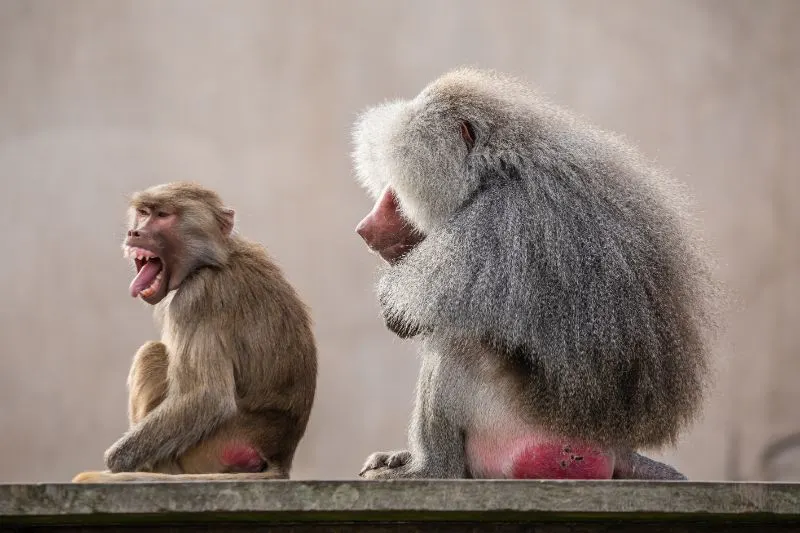
The world of monkeys with red bottoms is diverse and fascinating. One notable species is the Japanese Macaque, also known as the Snow Monkey (Macaca fuscata). These primates are known for their reddish-pink buttocks, as well as their capability to withstand cold temperatures.
Snow Monkeys’ Unique Adaptations:
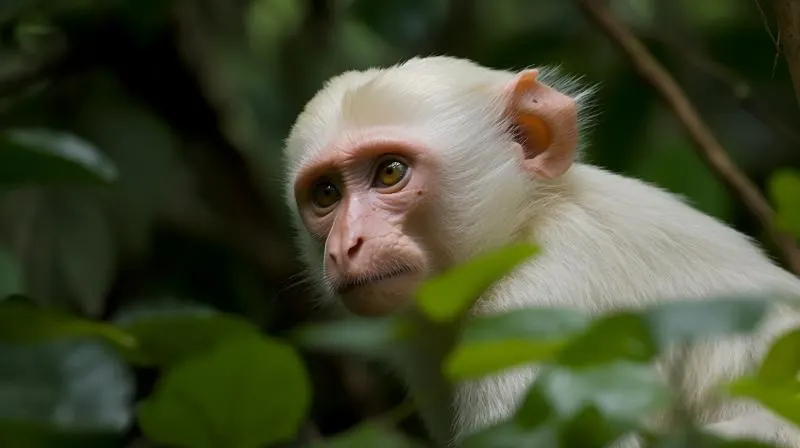
Japanese macaques have several adaptations that allow them to survive in their harsh, snow-covered habitats. One such adaptation is their thick fur, which provides insulation against the cold. They have also developed behavioral adaptations, such as relaxing in natural hot springs to keep warm during winter.
Behavior in Hot Springs:
The red-bottomed hot spring-loving primates are famous for their interesting habit of soaking in these thermal baths to escape the cold. Their red skin, which includes their distinctive red bottoms, is especially visible during these sessions. Studies have shown that the macaques’ time spent in the hot springs significantly reduces their stress levels while also conserving energy.
Red vs. Blue Butts:

While many monkeys have red bottoms, some species are known to have blue ones. For example, the Mandrill (Mandrillus sphinx) showcases red bottoms and red and blue facial markings. Furthermore, male mandrills are more colorful than females, making their faces stand out significantly.
See Related: Are Insects Animals? Exploring the Truth
Genetic Factors:
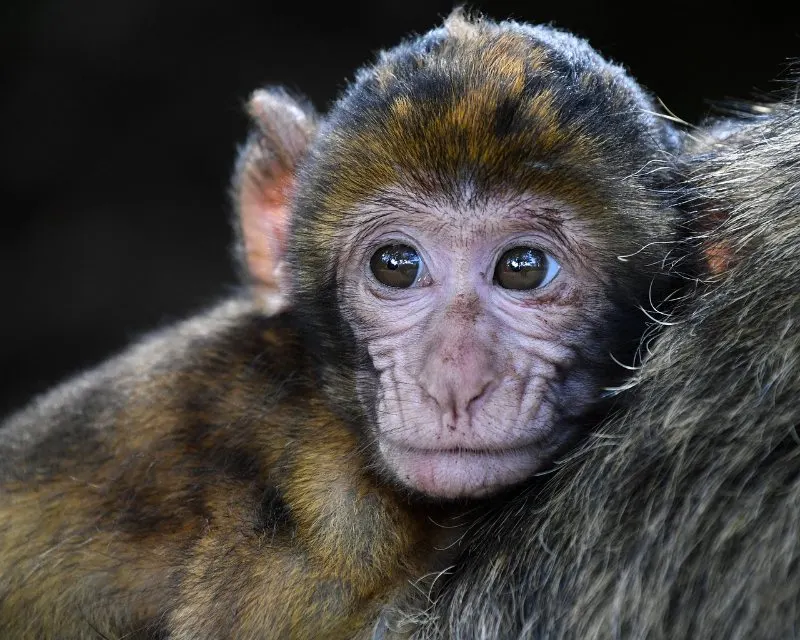
In some cases, genes can impact the coloration of a monkey’s bottom. This is particularly true for the Celebes Crested Macaques, which boast unique color patterns on their rear ends due to specific genetic traits.
Recent Studies and Findings
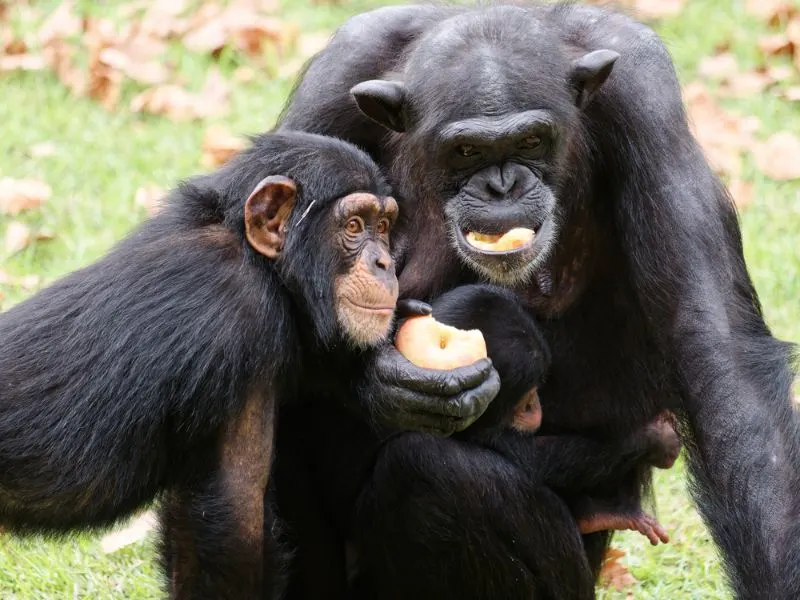
Recent research has revealed fascinating insights into the role of red bottoms in monkeys, specifically focusing on fertility, maturity, and offspring survival. A study published in Animal Behaviour in 2015 found that baboons with the reddest rumps did not necessarily attract more mates or have more frequent sexual encounters. Furthermore, the female baboons with the most swelling did not seem to have better odds of their offspring surviving past infancy.
Moving on to Indonesian species, the Celebes Crested Macaques exhibit extreme red hues on the behinds of females in heat. Although they do not have rainbow-colored bottoms like their Mandrill counterparts, the red coloration could still attract mates and mating partner.
In Japanese Macaques, also known as Snow Monkeys, both males and females display red faces and equally red bottoms. Interestingly, in these monkeys, the females have redder butts than the males, and this distinct coloration of the female butt could influence sexual attractiveness and mate selection.
Lastly, female Rhesus Macaques exhibit similar color variations on their buttocks, but research about their roles in fertility, maturity, and offspring has not been widely explored.
Related Resources:
- What is Climate Change Mitigation? Here’s What to Know
- Wolves Size Comparison
- Mastering Solar Panel Direction

